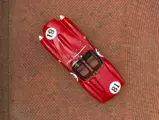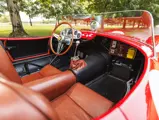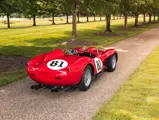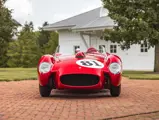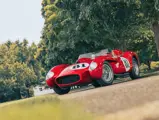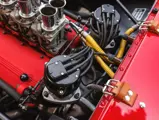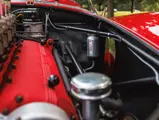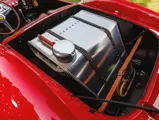
1958 Ferrari 250 Testa Rossa by Scaglietti
{{lr.item.text}}
{{bidding.lot.reserveStatusFormatted}}
- The “Pontoon Fendered” Testa Rossa is widely regarded as one of the most beautiful body designs ever created
- A cornerstone model present in the world’s greatest automotive collections
- The Testa Rossa was the most successful sports racing car in Ferrari’s illustrious history, securing four World Championships and four overall victories at the 24 Hours of Le Mans from 1958 to 1962
- Chassis 0738TR was raced in nearly 20 period races with four overall victories over a 10-year racing career
- One of only 19 examples to leave the Ferrari Factory with the highly desired “pontoon fender” bodywork
- Fully restored by Ferrari Classiche in 2013, this example is one of the very few Testa Rossas to be Red Book certified as retaining both its matching-numbers engine and gearbox
- Offered for sale for the first time in over a decade from a prominent American Ferrari collection
THE 250 TESTA ROSSA
For centuries, Italian artisans have created many of the most evocative and beautiful objects known to man. From the Renaissance period onwards, masterpieces were designed, painted, and sculpted in Italy that, to this day, transcend their mere presence as objects and foster feelings of unity and emotion that allow the viewer to connect with them on a personal level. The vast majority of these objects are stationary; however, during a brief period in the 1950s, beauty and function connected in select Italian sports cars, which transformed those automobiles beyond simply modes of transportation into moving art. The 250 Testa Rossa represents the pinnacle of this era as a true masterpiece of moving sculpture. Never before or since has an incredible combination of beauty and power led to as much on-track success and art-inspired emotion as with the 250 Testa Rossa. Driven by Scuderia Ferrari during five World Championship years from 1957-1962, the Testa Rossa will forever be known as the most successful sports racing model in Ferrari’s history, and the “pontoon fendered” body style as the most beautiful version of the Testa Rossa, the greatest expression of automotive art to come out of Maranello.
In 1957, Ferrari caught wind that the Fédération Internationale de l'Automobile (FIA) was going to reduce their previous unlimited engine capacity rule for sports racing prototypes down to a 3.0-liter limit for 1958. In anticipation of this change, Ferrari decided to use their single-overhead cam 3.0-liter V-12 engine, then in regular production at Maranello on 250 GT road models, and develop it further into the perfect powerplant to attack the racetrack. The 250 engine had already proved its mettle in competition, powering the 250 MM berlinettas and 250 GT Tour de France berlinettas to numerous victories, including the famous overall win at the 1956 Tour de France. Enzo Ferrari instructed his engineering team to further tune the engine for improved performance, during which a major paradigm shift was undertaken.
The spark plugs were re-located from the inside of the engine bank’s V to the outside surface. In addition to making a change of plugs quicker and easier, this provided newfound space to reinforce the cylinder head’s attachment to the block, obviating the need to rely on a fixed-head architecture when increasing the engine’s compression. The additional space also allowed for a more substantial intake configuration, and the new engine was duly aspirated with six Weber 38 DCN twin-choke carburetors. Dubbed the Tipo 128 LM engine, with obvious aspirations to tackle Le Mans, the new 3.0-liter V-12 developed 300 horsepower, and its head was finished in crackle red paint, evolving out of the 500TR/500TRC from 1956 and 1957 which first employed the now famous red crackle paint within the engine bay.
Like the paths of most great racing machines, the advance of the 250 Testa Rossa was incremental. After experimentation with the new engine in a 250 GT Tour de France Berlinetta, chassis number 0677 GT (which debuted to victory at the Giro di Sicilia of April 1957), the first true 250 Testa Rossa appeared at the 1957 Nürburgring 1,000 KM in chassis number 0666, a 290 MM chassis clothed in Scaglietti spider coachwork and fitted with the new 3.0-liter “Red Head” engine. This car was joined at Le Mans in June by a more definitive version, chassis number 0704, which rode a lengthened 2,350 mm-wheelbase 500 TRC chassis and wore distinctive new aluminum coachwork from Scaglietti that featured sculpted cutaway fenders and slots in the nose for improved brake cooling. This jaw-dropping design immediately caught attention on the track for both its looks and power, earning the body style the nickname of the “pontoon fender” Testa Rossa.
The potential of these early 250 Testa Rossa prototypes was sufficient for Ferrari to make an announcement regarding production at the company’s annual press conference in November 1957. For the 1958 season, two versions of the new 3.0-liter Testa Rossa would be built: a works iteration to be campaigned by the Scuderia Ferrari (which would feature a rear-mounted transaxle and de Dion rear suspension) and a version for privateer clientele with a traditional front-mounted four-speed gearbox and live-axle rear suspension. Surprisingly enough, it was the customer cars that became truly iconic, as the Scuderia cars were fitted with bodies with enclosed fenders, while the privateer examples wore the striking pontoon-fender coachwork that initially graced 0704 at Le Mans. All cars received the even-numbered chassis appellations that characterized Ferrari’s racing models.
The 250 Testa Rossa dominated the 1958 sports car racing season, finishing 1st, 2nd, and 4th at the Buenos Aires 1,000 KM; 1st and 2nd at Sebring; 1st, 3rd, and 4th at the Targa Florio; 2nd, 3rd, 4th, and 5th at the Nürburgring 1,000 KM; and winner of the all-important 24 Hours of Le Mans. Updated versions of the model continued to find success over the following four years, winning Le Mans an additional three times in a row from 1960 to 1962.
But of all the Testa Rossa configurations, it was undoubtedly the pontoon-fendered customer car of 1958 that evolved to be the most iconic among collectors and enthusiasts. Built in minimal quantities with just 19 remaining examples, these Scaglietti-bodied spiders have grown to be among the most celebrated cars that Ferrari ever built, arguably leading even the 250 GTO and 250 LM in sheer desirability. Constituting the very definition of a legend, the pontoon-fender 250 Testa Rossas occupy that rare cross-section of excellence in competition and aesthetic mastery of design that defines history’s most significant racing models.
CHASSIS NUMBER 0738 TR
The subject car, one of the coveted 19 remaining “pontoon fender” examples, was completed at the factory in the spring of 1958. Chassis 0738 TR was ordered new by the Official Central and South American Ferrari Concessionaire Carlos Kauffman in Caracas, Venezuela, for Jean-Louis Lacerda Soares of São Paolo, Brazil. The car arrived in Brazil in June of 1958, and Soares immediately went racing. His team, Scuderia Lagartixa (pronounced Largatisha), was comprised of himself, Chico Landi, and Luciano Della Porta and was a professionally run gentleman’s driving “stable.”
By the end of 1960, the team had entered 0738 TR in 14 races across Brazil, achieving multiple victories and half-a-dozen podium finishes. In 1961, chassis 0738 TR was sold to Giorgio Moroni, who promptly shipped the car to Modena, Italy, where a new 250 GTO-style body was created by Piero Drogo, the master body builder who would later go on the create the bodywork for the legendary Ferrari 330 P4. In a sport that demanded innovation and new design, Moroni rationed that he could give 0738 TR this perceptibility by commissioning sleeker-styled bodywork, therefore preserving its ability to stay in competitive racing longer. The reality was, however, that the car was left untouched underneath and that this was purely a visual exercise.
Maroni would go on to race the car at least twice, once in 1964 and again in 1965, before selling it to Claudio Klabin in the fall of 1965. In 1966, Klabin traded the car to mining magnate Paulo Cesar Newlands, who raced the car a final three times in 1967. All told, 0738 TR was raced at least 19 times in Brazil, achieving four victories and over half-a-dozen podium finishes spanning a 10-year racing career.
0738 TR was eventually sold in 1975 to former racing driver Camillo Christofaro in São Paulo, where it remained in storage for approximately a decade until it was found in 1986 by legendary automotive “treasure hunter” Colin Crabbe, who managed to purchase the car and bring the car home with him to England. The car was subsequently sold to major US collector Robert Rubin, where it shared garage space with a 250 GTO, before being sold back to the UK, where it found a home with connoisseur collector Sir Paul Vestey. Under the care of Sir Paul, 0738 TR was painstakingly and carefully returned to its original configuration by the marque specialists at David Cottingham’s DK Engineering. RS Panels meticulously hand-formed a completely accurate alloy body and then painted it yellow with a green nose band in honor of its Brazilian heritage. Sir Paul retained the car for several years, driving it occasionally in events such as the Mille Miglia Historica and Goodwood Festival of Speed, before selling it in 1995 as part of a complex trade deal for a 330 P3. In 1996, the car was purchased by well-known collector and avid vintage racer Carlos Monteverde, who drove the car in over 50 vintage races during his ownership. As noted in Marcel Massini’s history, 0738 TR was involved in vintage racing accidents in 1998 and 2001, and subsequently carefully restored both times.
By 2010, Mr. Monteverde had decided to conclude his vintage racing with 0738 TR and, prior to its eventual sale in 2013, entrusted the car to Ferrari Classiche, who undertook a complete restoration and certification of the car. Totaling more than €650,000, Ferrari Classiche constructed a new and perfectly proportioned body for the car, fully bringing 0738 TR back to its beautiful 1958 configuration “as it last left the Factory.” Following the completion of the restoration, Ferrari Classiche also issued the car its all-important Red Book, which confirms it to be one of the few remaining examples to retain both its original engine and gearbox. Following the completion of its restoration at Ferrari Classiche, 0738 TR has enjoyed resting among its stablemates at a very prominent American collection for the last decade.
The 250 Testa Rossa is widely regarded, without exaggeration, as the ultimate Ferrari; a unique signifier of all for which Enzo Ferrari stood, with beauty perfectly molded to engineering design to create the greatest racing sports car ever built. With the Testa Rossas competing for overall victory while the GTOs were achieving GT class wins, it could be argued that the TR is the most significant Ferrari of this golden era. Today, and for the foreseeable future, the Testa Rossa remains a cornerstone of the world’s greatest automotive collections. The opportunity to acquire a matching-numbers example of the pontoon-fendered Testa Rossa has proven to be extremely rare and is not to be missed by collectors looking to cement their collection among the very best in the world.








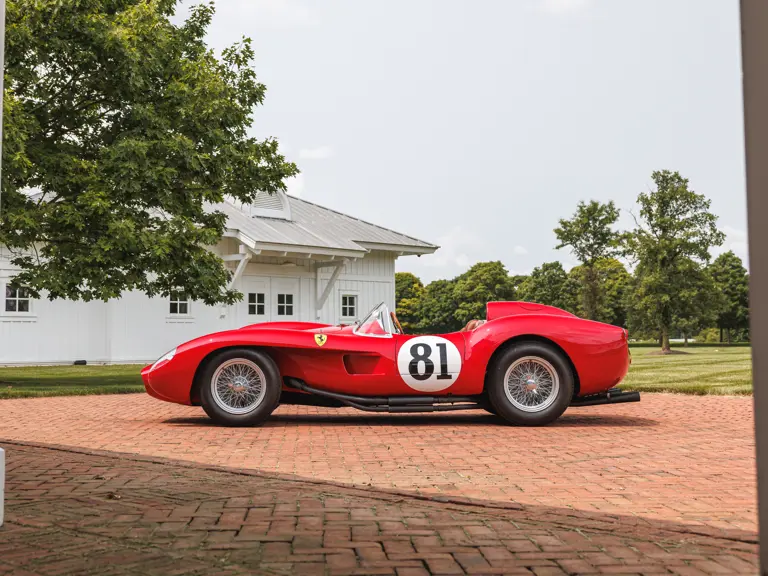





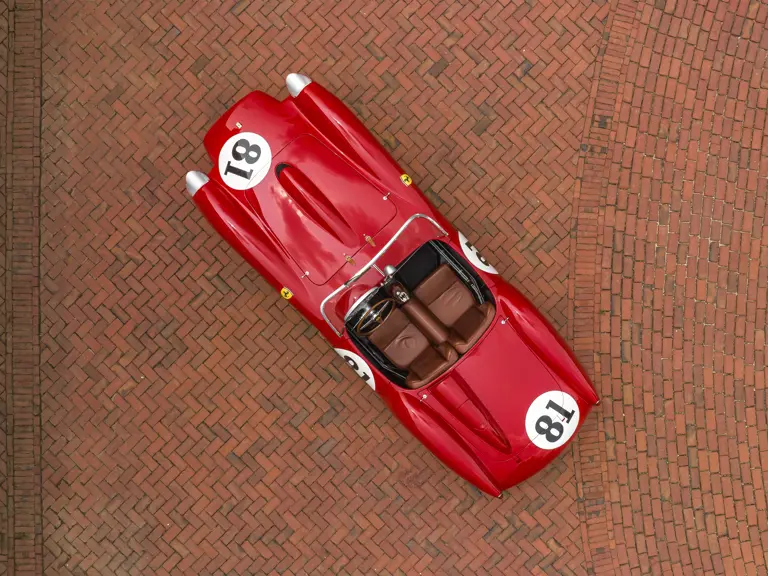


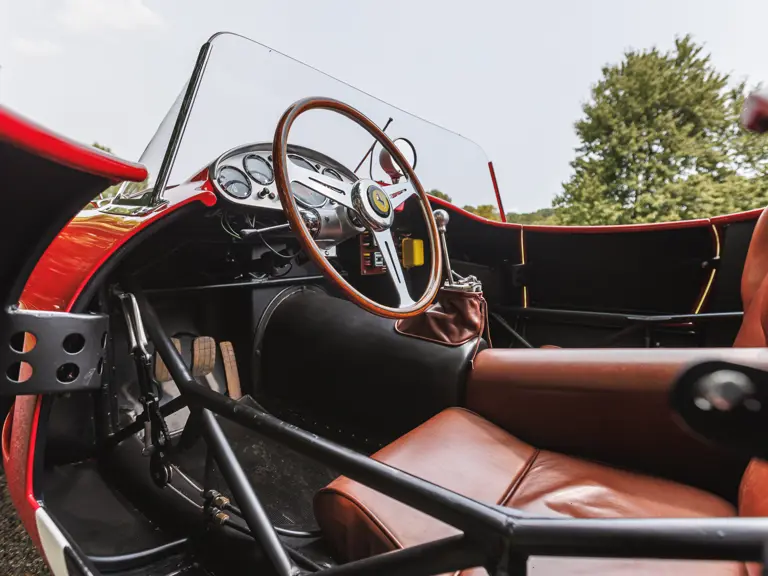













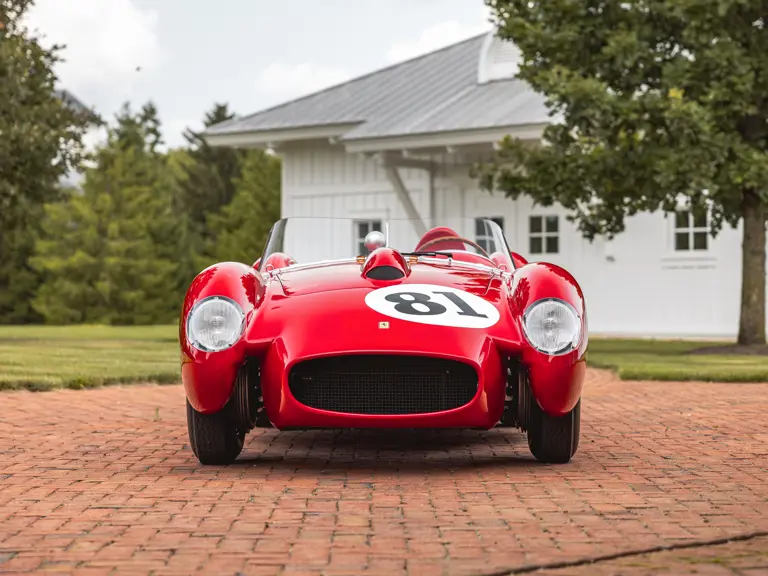


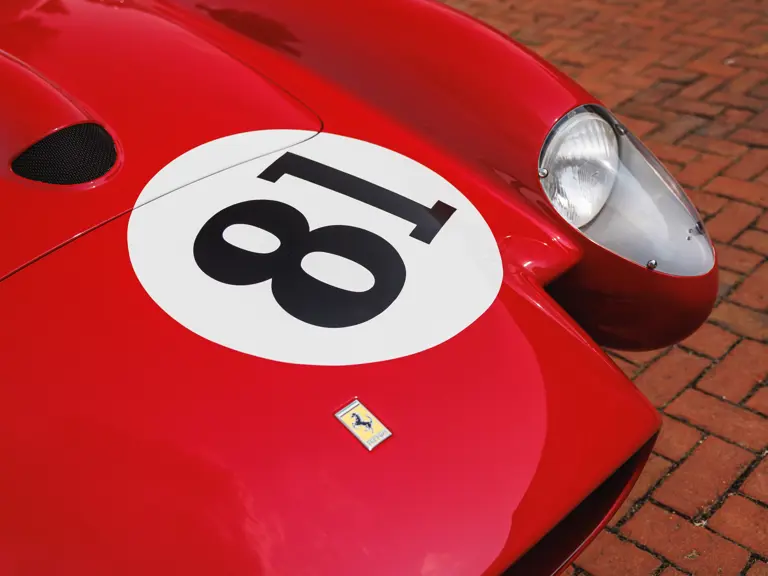
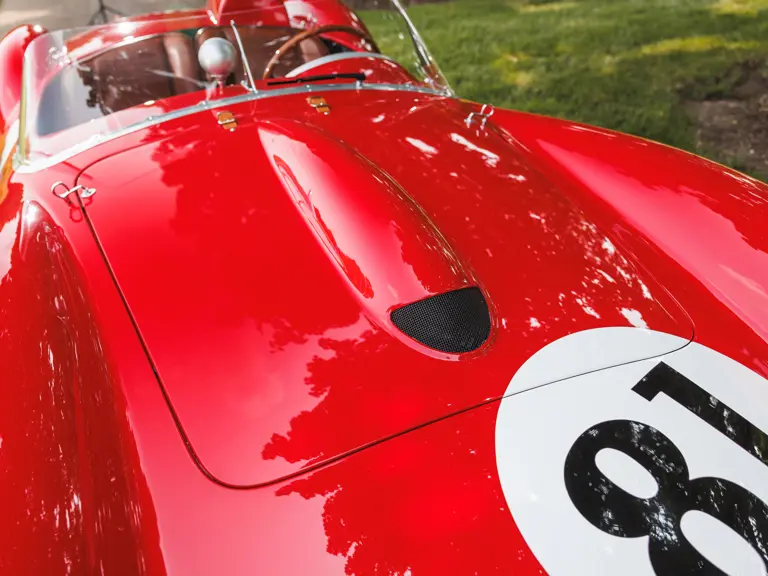
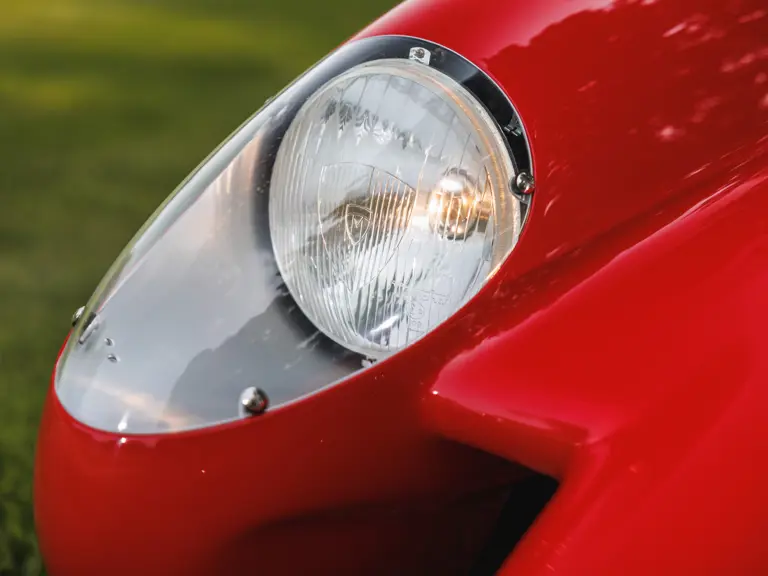


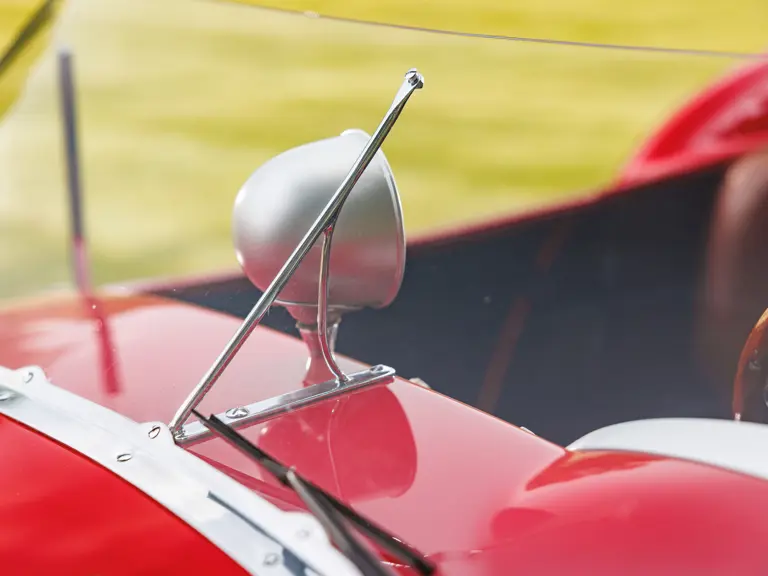


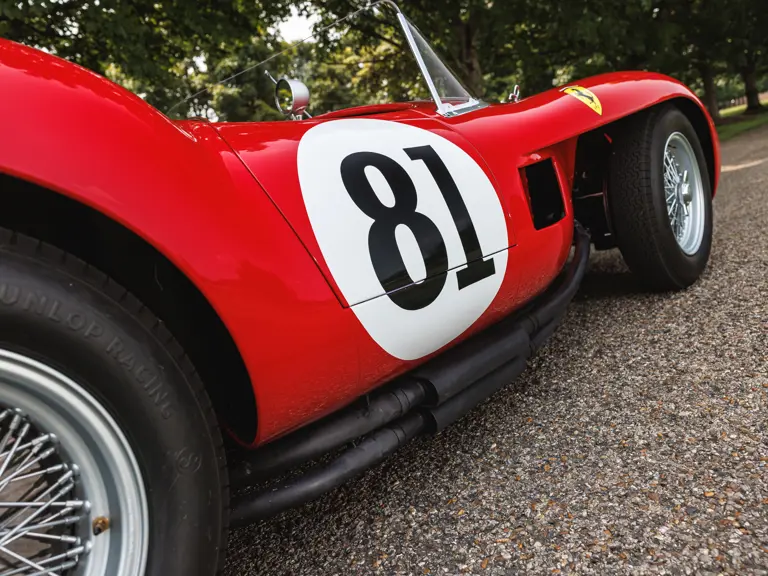





















 | New Albany, Ohio
| New Albany, Ohio









